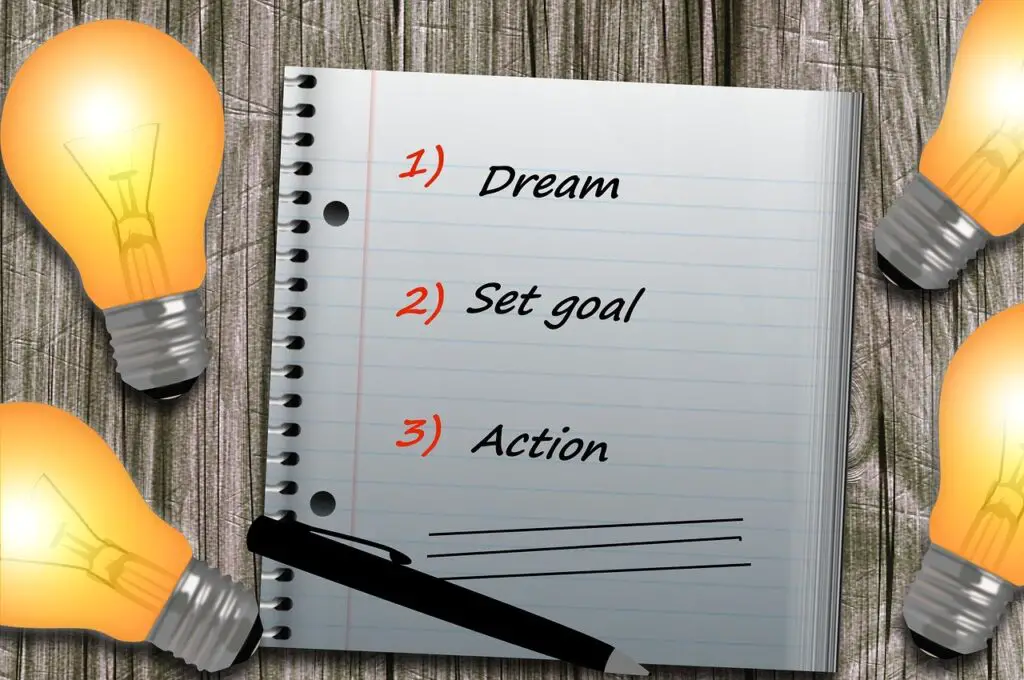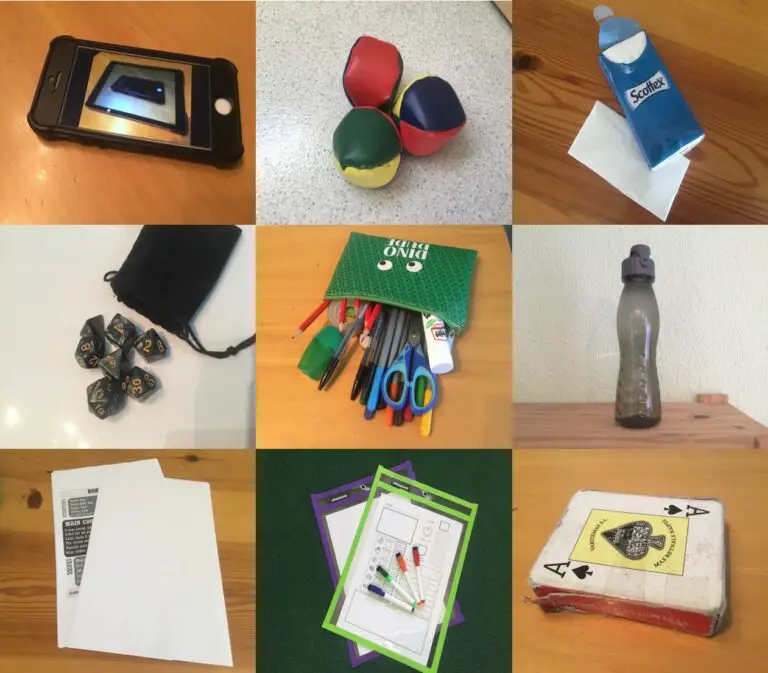Designing an EFL/ESL curriculum is a daunting prospect. Whether you’re creating one for private classes, school lessons, or for a whole language academy to follow, it’s such a foundational part of planning that you want to get it right.

If you’re feeling worried about setting out a full curriculum, this article is here to help. I’ll talk about the 8 key things all curricula should include and how to make sure you’ve got all bases covered. With these principles, the process seems a lot easier.
I like to think of designing a curriculum like plotting a journey on a road map. It’s a plan of how to get from one place to another, the locations we’ll visit along the way, and the best routes to take.
With this analogy in mind, let’s get straight to the first key idea.
1. An appraisal of students’ needs
Before you plan anything, you need to know the needs of your students.
This can be as simple as knowing their age and approximate level of English, and may also take into account their background of learning English, their native language and learning preferences
In schools and language academies with large groups, everyone follows the same route. The road map journey is shared. While you should try to differentiate and adapt materials for individual students (see more in part 8), on the whole, the curriculum is the same for everyone.

On the other hand, with small groups and individual students, you can create a customised, tailored journey. They’re starting at a unique place and may benefit from a different route to normal.
To find out what your students need, you should perform a Needs Analysis. This is a process in which you determine the ability, interests, learning preferences and personality of your student(s).
To learn how to perform a Needs Analysis, read my article: Needs Analysis for Private EFL/ESL Lessons: 12 step guide. It’s targeted at private classes, but the ideas apply to all types of lesson.
Every curriculum should begin with an explicit appraisal stating the needs of the students. It defines the purpose of the curriculum.
From this point, you can start thinking about how you can fulfill those needs.
2. Goals and objectives (long term and short term)
Once you’ve established what your students need, you can start setting goals and objectives.
For the purpose of this article, I’m going to define goals as long-term aims, such as “gain confidence and fluency in speaking English” or “develop understanding of grammar to a B2 level”.
Objectives are smaller scale and specific. They’re typically targets for individual classes or units. For example, “understand and apply the second conditional” or “expand vocabulary related to the tourism industry”.
Goals are the final destination of our road trip. Objectives are the stops we’ll make along the way.
To determine goals, refer to the students’ needs and consider any explicit aims your students might have, like passing an exam, or preparing for international travel.
When teaching teenagers and adults, it’s vital to discuss goals with your students. You may also wish to consult other staff in your school/academy. With children, parental input is important, too.
Once you’ve established the goals, you can start planning the “route”. Set achievable objectives as small steps on the way to the end of the journey. For example, if the goal is to improve fluency and speaking confidence, objectives for different stages of the course may include:
- Talk about personal things: likes, dislikes, hobbies, work, school, etc. using extended sentences.
- Develop the ability to ask interesting open and closed questions to others.
- Express opinions with an appropriate level of certainty.
- Learn different ways of agreeing and disagreeing with someone.
When you have these short-term objectives, you can plan individual sessions and activities to work towards them.
IMPORTANT: It’s common for curricula to have multiple goals. You should create objectives for each of them. However, be wary of setting too many goals, else you’ll lose focus. 3 or 4 should be your maximum.
3. A balance of skills
Unless the goals of your curriculum are specific to a certain skill (like conversation classes), you should give a good balance of reading, writing, listening, speaking, grammar and vocabulary.
Plan your curriculum to include all skills in equal measure.
If an objective is “understand and apply the second conditional”, it may be tempting to focus more on grammar than the other skills.
And sure, you will need to go over grammar. But you can also practice the other skills at the same time with some well-designed reading activities, listening to good audio, and producing the second conditional with written and spoken language.
You could also boost some vocab. A good idea is to use the second conditional to talk about improvements to the school/office/town/country and learn appropriate vocabulary (don’t forget verbs, too).
Students could produce sentences like, “I would renovate the library and have public access to computers.”
That’s not to say every class and unit should encompass all the skills. Sometimes it makes more sense to focus on one skill. For example, the objective could be “write a formal letter of complaint”. Obviously it’s best to spend more time on writing.
Just make sure that over the course of the whole curriculum, each skill has an equal amount of time and focus.
For an in-depth look at some of the key English skills, check out my articles:
Guide to Improving EFL/ESL Students’ Reading Skills
Big Guide to Teaching EFL/ESL Writing: 16 simple steps
Teaching EFL/ESL Grammar: A guide for private tutors
Best Method to Improve EFL/ESL Students’ Vocabulary: 9 Steps
7 Steps for Incredible Private EFL/ESL Conversation Classes
4. Variation
Variation is a key part of a successful EFL/ESL curriculum.
Over the course of the curriculum’s duration (usually a year), students will have lots of classes. If they’re all the same, they’ll get bored and their progress will grind to a halt. Doing the same thing again and again puts students and teachers in auto-pilot, with motivation running low.
That’s not to say routines are bad. With children, especially, they create a comfortable environment in which they know what to expect.

But switching things up keeps a freshness to learning and stops staleness from creeping in.
It also creates stronger learning. Approaching a topic from multiple perspectives activates different parts of the brain and develops a range of skills.
So instead of following the same format for each class and unit, plan to include different activities beyond the normal instruction and drills. For example:
- role plays
- games
- projects
- arts and crafts
- music
- lessons in different locations
- puzzles and mysteries
- collaborative writing
- presentations
The art of planning a good curriculum is finding the best selection of engaging activities that progress students towards the desired objectives.
5. An appropriate pace
Getting the pace of progression right is one of the biggest challenges in designing a curriculum.
If you go too fast, students don’t internalise what they learn. They feel rushed and stressed when you move on while they’re still struggling to grasp the previous lesson’s content.
On the other side of the coin, you don’t want to dwell for too long on something students are confident with. You only have a certain amount of time, and you need to keep pushing forward to meet those objectives.

The sweet spot is when you spend just about enough time on something for students to understand it deeply, then move on to the next thing.
But how do you know what’s an appropriate pace?
The answer is, you don’t. You have to make an educated guess. This is where experienced teachers have an advantage; they can predict the pace of progress based on how their previous students performed.
If I’m not sure, I tend to go for a slightly slower pace. I prefer my students understand everything in depth and perhaps waste a bit of time rather than only gaining a superficial understanding of the language.
Consider this. You can’t teach your students everything. When designing a curriculum, resist the temptation to pack it full to the brim. Students need time and practice to absorb, digest and apply new concepts and structures.
Refer back to your goals. One of the main reasons I suggest a maximum of 3-4 goals is to limit the pressure to cram too much into the curriculum.
6. Assessment strategies
Right, now you’ve set goals and objectives and plotted out sessions with great activities and creative solutions to make sure your students improve quickly. But how do you know how much they’ve learned?
Assessment is fundamental to a good curriculum. It’s how we measure the development of skills and determine if students have reached the objectives and goals we set.
So, give them an exam to do, right?
Well, not exactly. Exams are one way of assessing students. They just so happen to be the most famous and established method, but they’re far from the only strategy and, I’d argue, one of the least effective.
Exams, especially those with multiple choice and short-form answers, are useful for testing large groups because they’re uniform, easy to mark and give a nice numerical score at the end.

But they give quite a narrow view of a students’ capabilities. For a start, they’re often formal and written. Students who do well in a silent, focused environment do disproportionately well compared to those who thrive in dynamic and social contexts.
Not to mention they’re really boring and students hate them.
A good curriculum includes a variety of assessment strategies that approach learning from multiple angles. It will also have plenty of formative assessment and observation by the teacher.
Here are some ways of assessing your students without giving them exams:
- Have short, individual conversations with them (informal speaking test).
- Observe their performance with the target language during specifically designed activities.
- Assess students doing presentations, projects and role plays.
- Keep track of performance when doing drills and worksheets.
- Use homework as an indicator of progress.
Really, you should assess students all the time. Soft, continuous assessment is optimal, although it’s useful to have some structured activities designed with assessment in mind, especially with larger groups.
7. Flexibility
Let’s go back to our road map analogy. We made a brilliant plan, choosing the perfect route which will get us to our destination as quickly as possible, and hitting all the targets along the way. Let’s go and do it!
But wait, a third of the way through the journey, there’s an accident on the road and traffic is at a standstill for miles. Disaster. Our perfect route can’t continue. What do we do?
Well, the best plans include a backup. An alternative route.
This is the same for a curriculum. You can’t predict what’s going to happen in the course of study, so you should build in some contingency plans and room for things to change.
For example, in unit 2, the pace was too high and students didn’t understand the concepts. Can you extend the unit by an extra session or two without playing catchup for the rest of the course? If your curriculum has no room to breathe, then you’ll struggle in these situations.

I like to include periodic “breather” sessions which change depending on the needs of the class at that time.
When progress is going well, the session will be a fun collaborative project where students can apply their skills freely (this creates some variation, too). However, if students need more time on something, this class can transform into a support session.
You don’t need to plan too many of these sessions. A good rule of thumb is every 6-8 weeks, or every 2 units.
8. Differentiation
Differentiation is the adaptation of learning objectives and materials to appropriately challenge every student in the class.
It’s typically thought about more in larger groups where you have differing abilities. If each student does the same work and has the same objectives, some will struggle and some will find it too easy. Only the middle section of the class will really benefit.
A good curriculum takes this into account and has differentiated objectives and activities. It’s more planning, yes, but it ensures every student maximises their progress.

The concept doesn’t just apply to large groups, either. Even with small groups and individuals, you can’t know for sure how challenging they’ll find the content, and you should be prepared to offer a more accessible option, or challenge them even further.
The way I like to do this is with three levels. You could call them levels 1, 2 and 3, or lower, medium and higher. The naming doesn’t really matter.
The differentiation doesn’t have to be drastic. You don’t need to prepare three totally different lessons, just have three levels of expectation. Challenge all students to reach the lowest level, most to reach the medium level and the confident ones can aim for the higher level.
For example, let’s say we’re studying the second conditional.
- Lower: Can understand and produce short sentences in the first person using both the condition clause and the consequence clause, e.g. “If I won the lottery, I would buy a big house.”
- Medium: Can understand and produce extended sentences using different perspectives with the condition clause and consequence clause in either order, e.g. “I think he would probably buy a big house or an expensive new car if he won the lottery.”
- Higher: Can understand and produce complex sentences with different perspectives, using contracted forms of would and using the subjunctive form of the verb “to be”, e.g. “If I were in your position, I’d definitely talk to my boss about it, then if she didn’t give a good answer, I’d make the deal anyway.”
IMPORTANT: Be careful of pushing students too hard. They may be motivated to reach the highest level when they’re not ready, and this can confuse their understanding of the basic concepts.
Conclusion
As you can tell from reading this article, there’s a lot more to designing a curriculum than simply choosing which order to study certain topics.
I recommend you take a look at some good curricula (Cambridge produce high-quality textbooks based on a tried and tested curriculum) and figure out what makes them work, what you don’t like, and what you can use to make yours the best it can possibly be.
It takes time, hard work and a fair amount of experience to get it right. Reach out to trusted colleagues for advice and make tweaks where necessary.
Hopefully, by following this guide, you’re one step closer to creating an engaging and effective curriculum that will help your students reach their potential!








